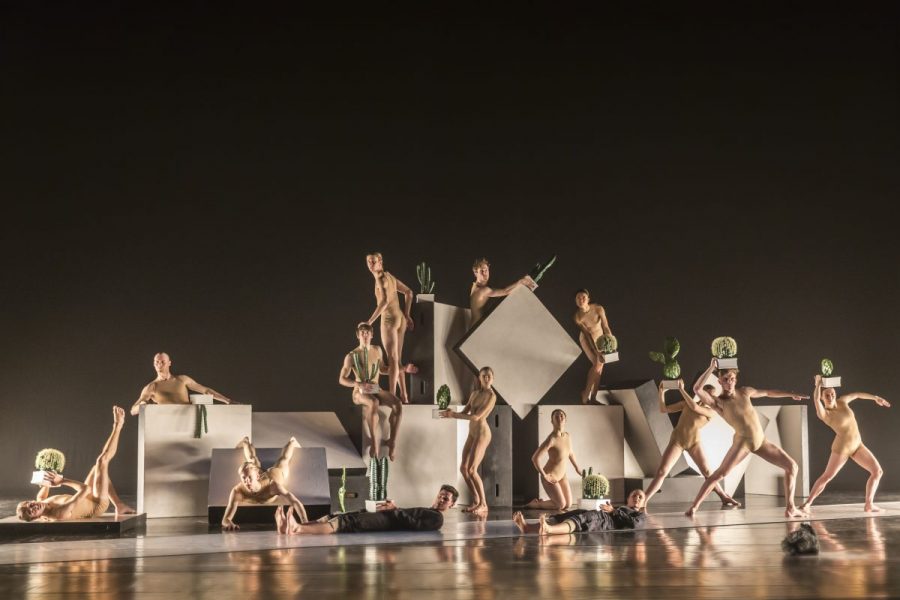@ Edinburgh Festival Theatre, Edinburgh, until Sat 23 Apr 2016 (and touring)
It is always a pleasure to see Nederlands Dans Theater 2, who are in Edinburgh for two shows as part of their UK tour. These dancers, aged from 18 to 23 years old, have an amazing, fresh energy, and really go for it when they perform, happy to take creative risks. In these gloomy days of cutbacks and dumbing down, it is a real joy to see a company of young dancers who are not only fully committed to their art form, but also to cutting edge, no compromise, contemporary dance: full-stop.
There are three sections to tonight’s programme, with a few works new to Edinburgh amongst a number of old friends. The first of these sees three works by house choreographers Sol León and Paul Lightfoot. Two of their more recent works bookend their well-known Sad Case from 1998, and are presented here in a continuous flow, the staging dynamically changing through the clever use of moving black flats.
León and Lightfoot’s choreography comprises strings of variable length moments, and is intense, emotional and sometimes very witty. Their long-standing relationship with NDT 2, allows them to really tap into this company’s unique vitality, their choreography often technically very challenging in a sustained way.
The middle section of the programme consists of two works: Edward Clug’s mutual comfort and Hans van Manen’s Solo. Clug’s choreography works well with the flowing but uneven pulse of Milko Lazar’s music, the dance very fluid but often characterised by many, smaller almost erratic movements.
Manen’s Solo, although comprising (as it were) one line, is split between three dancers, its physical intensity being such that it would be impossible to perform otherwise. However, the interesting thing here is although Solo portrays one man, the individual dance styles of the performers blur the choreography slightly, like three layers of colour printed slightly out of alignment.
The finale of the programme is Alexander Ekman’s Cacti, which is a piece served with a huge dollop of Swedish humour. Its wry, self-reflexive nature makes it difficult to comment on without becoming part of the joke. Again, the fast pace, wit and joie de vivre of the piece absolutely suits the liveliness of the dancers: the perfect ensemble work to round off the evening.
Taken as a whole, the programme somehow doesn’t fit together quite perfectly. However, with such fantastic dancers and such first-rate choreography, this becomes a minor point.


Comments